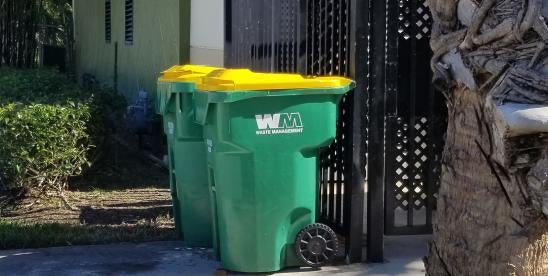Last month in New York, the Appellate Division, Fourth Department delivered a victory to landfill operator Waste Management, dismissing a laundry list of tort claims arising out of a real estate developer’s odor complaints. In William Metrose Ltd. Builder/Developer v. Waste Management of New York, LLC, the Fourth Department reinforced an important precedent for environmental nuisance claims – that redress for odors that impact the community at large is through effective governmental enforcement and not private lawsuits. But the certainty that the defense-oriented victory provides may be short-lived, as cases seeking private enforcement of New York’s Environmental Rights Amendment move their way through the New York courts.
In Metrose, a real estate developer sued a landfill operator, Waste Management, claiming that noxious odors from the company’s High Acres Landfill had reduced the value of its adjacent properties. The developer contended that these odors hindered its ability to sell homes and develop properties, resulting in lost profits and reputational damage. Plaintiff asserted claims of private nuisance, public nuisance, trespass, and negligence.
The court dismissed all of Metrose’s claims. Applying the Court of Appeals rule established in Copart Indus., Inc. v. Consol. Edison Co., 41 N.Y.2d 564 (1977) and the more recently decided Davies v. S.A. Dunn &Co., LLC, 200 AD3d 8, 11, (3d Dep’t 2021), lv denied 38 NY3d 902 (2022), the court ruled that the allegedly pervasive odors did not state a claim for a private nuisance because Metrose alleged that the odors affected a large portion of the community and rejected Metrose’s public nuisance claim for failure to allege any special injuries beyond those experienced by the broader community. The court also dismissed claims of negligence and gross negligence, citing Metrose’s inability to demonstrate direct physical injury or property damage, a requisite under New York law.
In many ways, Metrose simply highlights the already stringent standards required in New York to prevail on environmental nuisance and negligence claims, emphasizing the need to allege direct, physical impacts rather than general inconvenience and mere economic losses as the result of odors. As many other cases have done, it clarifies the distinction between public and private nuisance claims and reiterates a preference for governmental enforcement of an alleged public nuisance over a private right of action.
Notably absent from the Metrose case were any claims invoking New York’s recently adopted Environmental Rights Amendment. This amendment, stated in N.Y. Const., Art. 1, Sec. 19, guarantees individuals the right to clean air, water, and a healthful environment. As highlighted by the 2021 E2 Law Blog post, the amendment’s adoption has raised numerous questions, such as whether it offers a private right of action and whether individuals can compel the state to enforce these rights.
The implementation of New York’s Environmental Rights Amendment, also known as the Green Amendment, is still recent, having been ratified in November 2021 and established as part of the state Constitution’s Bill of Rights in January 2022. Recent court cases have begun to clarify its application. For instance, in Streeter v. New York City Department of Environmental Protection, the amendment was utilized to address standing issues in environmental lawsuits, compelling municipal agencies to integrate the Amendment’s principles into their decision-making processes. Similarly, in Fresh Air for the Eastside, Inc. v. State, the court ruled that the operation of a landfill in violation of existing laws constituted a breach of the Green Amendment, necessitating state intervention. Conversely, in Marte v. City of New York, a claim based on the Green Amendment was dismissed because it could not be applied retroactively to decisions made before its enactment, illustrating its limitations in modifying or overturning existing approvals.
So, the question remains: Does the New York’s Green Amendment merely maintain the status quo, or does it offer a meaningful new avenue for environmental protection?
While the Fourth Department’s decision underscores the traditional barriers to private nuisance claims, especially against community-wide disturbances like odors, the emergence of the Green Amendment may shift the approach to prosecuting and defending nuisance claims. And New York courts will need to balance established legal doctrines with a novel constitutional right that arms litigants with a new weapon for their arsenal.
Regardless of how private litigants fare under the Green Amendment, there may be a fundamental alteration of the enforcement landscape. Private litigants seeking to define their rights under the Green Amendment will likely pressure the State to take a more robust enforcement role. Streeter, Marte, and similar cases navigate through the judicial system, testing the boundaries of the amendment and setting precedents that will significantly impact individuals and environmental justice communities, but may also reaffirm the primacy of governmental enforcement in tackling environmental issues.
Ultimately, the degree to which the Green Amendment enhances environmental protections will hinge on whether judges interpret it as a harbinger for change, or as a reinforcement of the government’s existing regulatory authority. As New York grapples with these legal innovations, the decisions made today will influence environmental litigation and enforcement strategies well into the future.




 i
i

